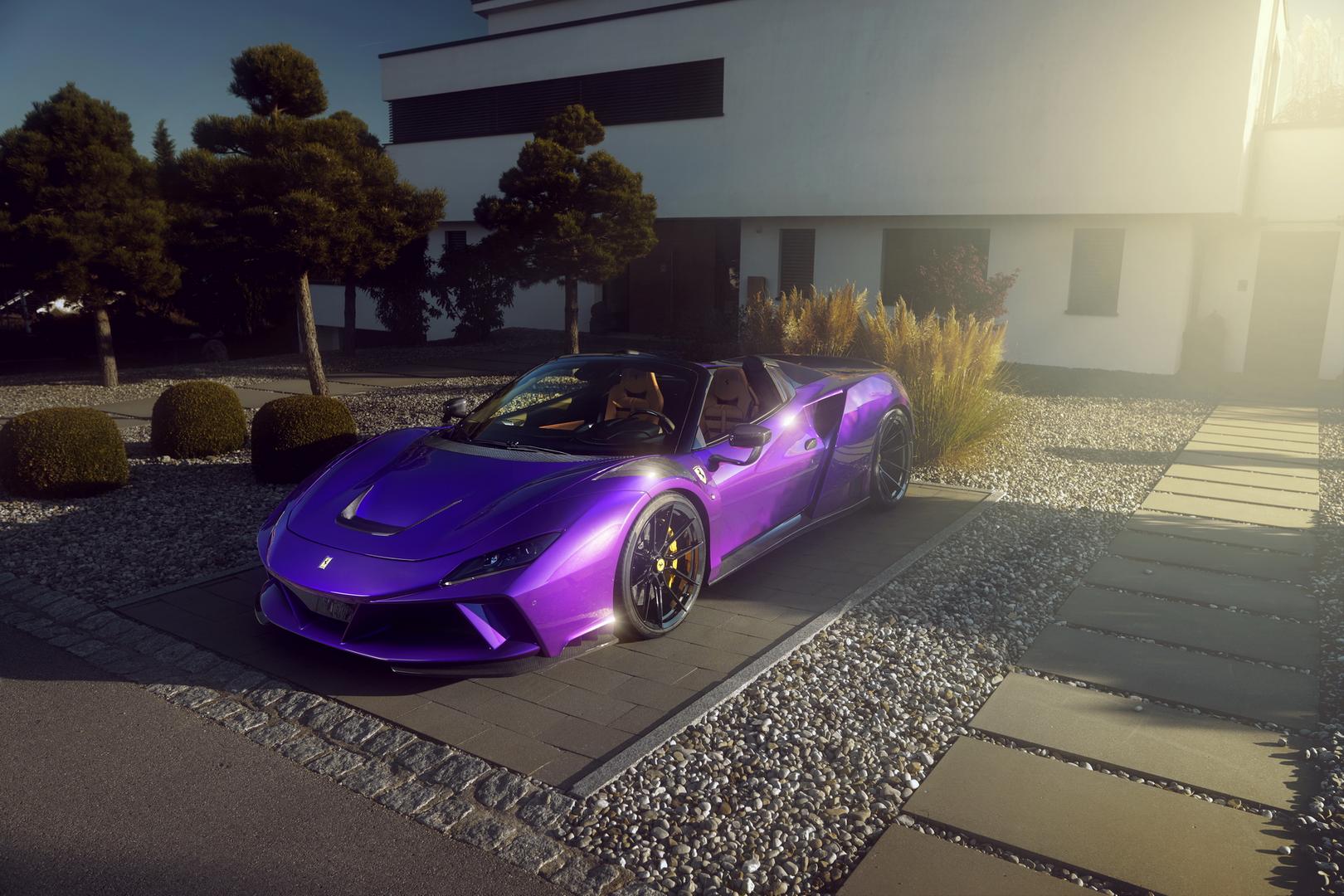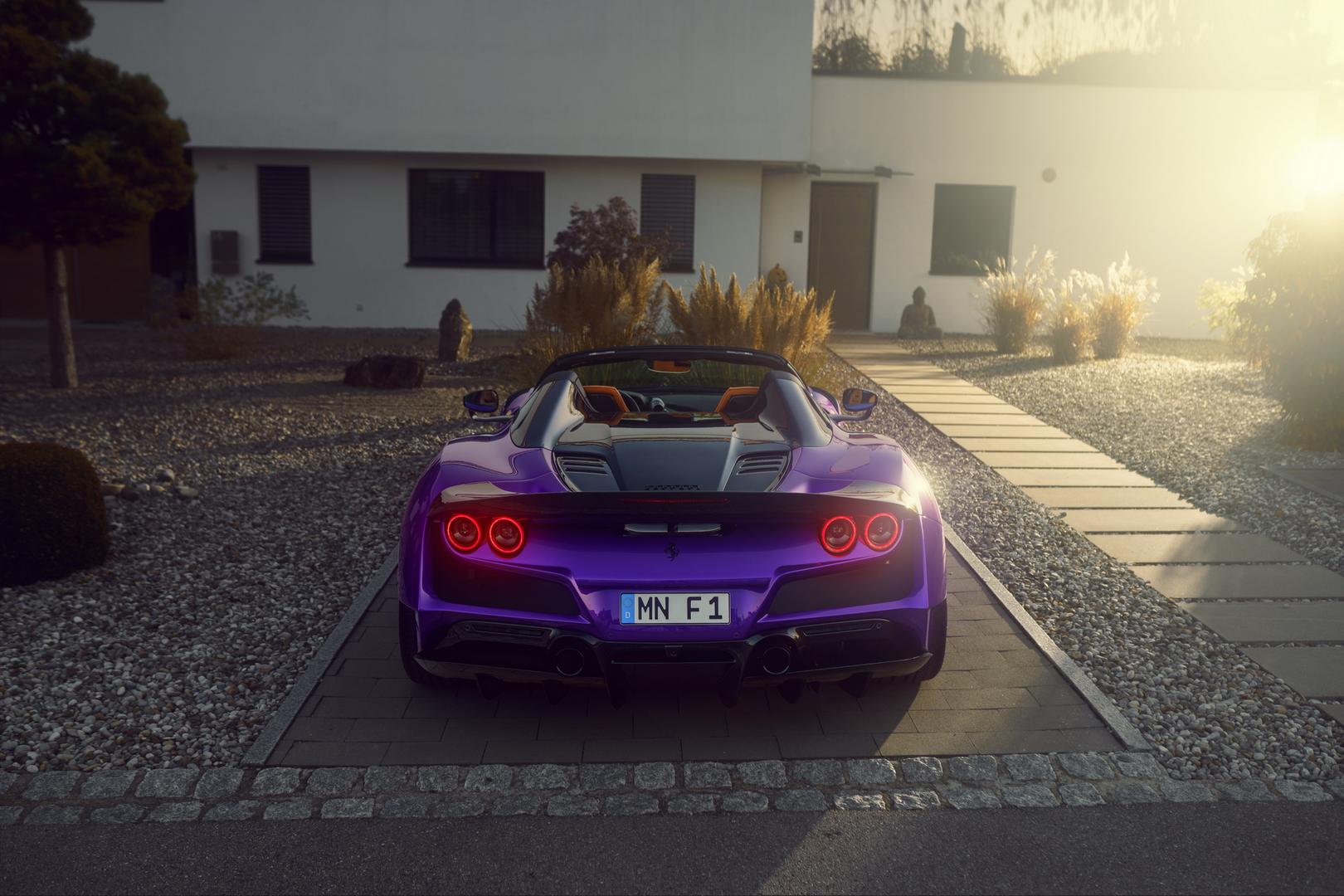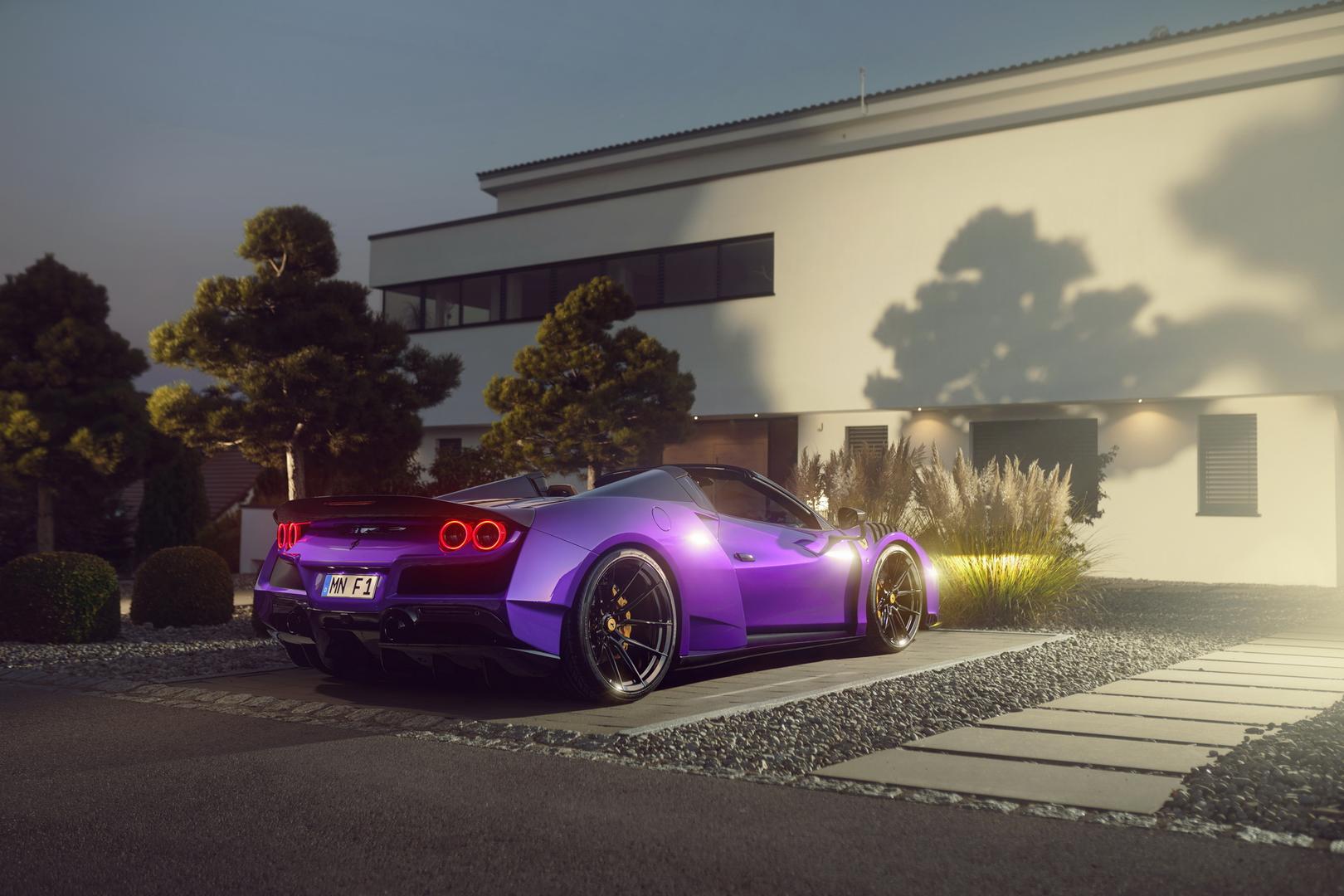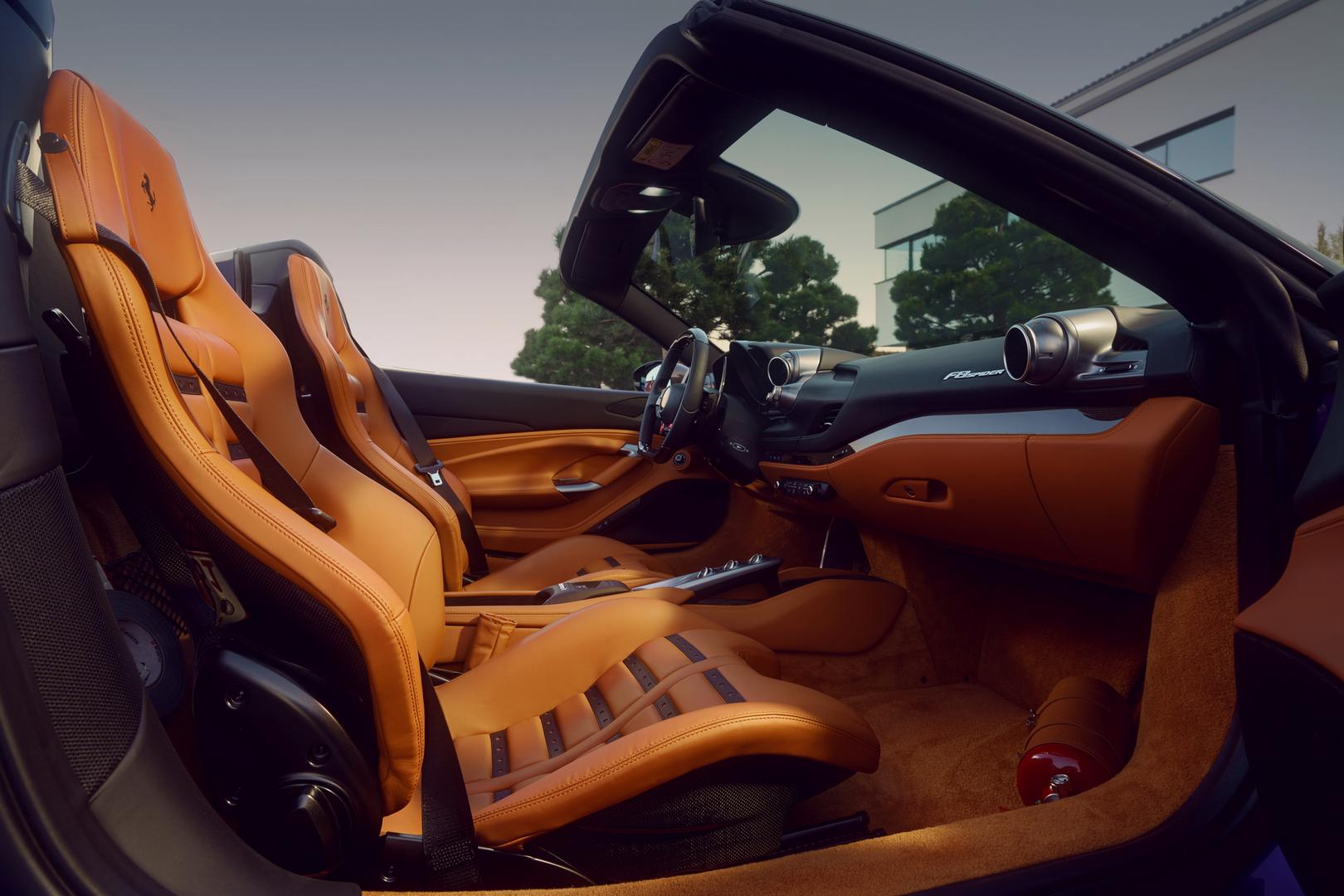
Meet the new Novitec N-Largo Ferrari F8 Spider, which is limited to only 15 cars globally. The additional bodywork was created using carbon fiber to keep the vehicle light in weight.
The N-Largo front fenders increase the car's width by 7 centimetres, while the back flares add 13 centimetres to the back area. The massive intakes deliver enough air to cool the engine and brakes, while the Gill-shaped slits in the top let out warm air from the brakes.
The newly released Novitec N-Largo is organized by a 3.9 litre twin-turbo V8 engine that produces a maximum peak power of 818hp at 7960 rpm and 903 Nm of torque at 3100 rpm. Regardless of whether the hard top is up or down, accelerating from 0 to 100 km/h takes 2.6 s and 0-200 km/h takes 7.7 s. The maximum speed is now 340 km/h.
The vehicle's exterior includes a front fascia that replaces the production bumper, extra spoiler lips to reduce aerodynamic lift and improve handling stability at high speeds, a wider rear fascia with a diffuser, and a carbon back spoiler in ducktail layout to generate more downforce at higher speeds.
Furthermore, the front hood insert, windshield trim, window triangles, door handles, and side mirrors are made of a light-weight grow to boost the vehicle's performance. Novitec also offers naked-carbon trim for the B-pillars as a choice, and the latter's design is similar to the current Formula One vehicles in terms of orientation.
Novitec also provides individual exclusivity for the interior, with leather and Alcantara available in any color.
The vehicle is equipped with forged Novitec NF10 NL wheels in size 9.5Jx21 with five twin-spokes. The wheels are mounted on 255/30 ZR21 tires for sporty handling and are available in 72 various colors, with a brushed or polished finish on the surface.
An extremely concave, forged 12Jx22 wheel with outstanding performance 335/25 ZR22 tires will also be available.
Novitec lowered the vehicle's ride height by 35mm using special sport springs to lower the center of gravity and improve the car's handling. With the touch of a button, the driver can also hydraulically improve the body by about 40mm at the front axle and return it to its standard level at speeds of up to 80 km/h.











